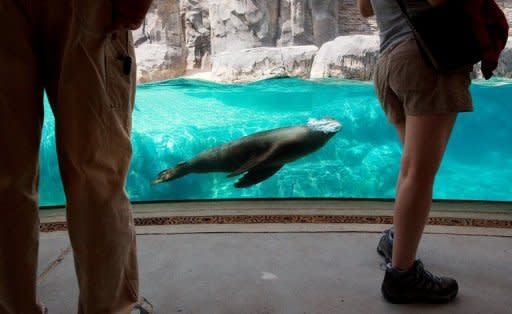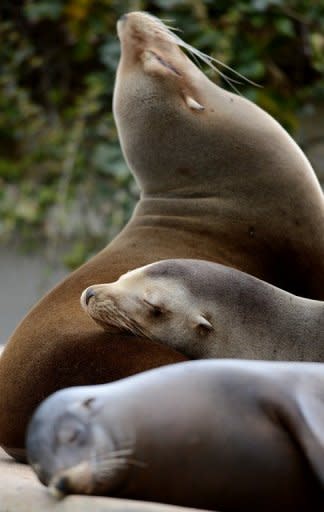'Bends' study shows how mammals make mega-dives
Scientists in California have shed light on a marine mystery: how diving mammals can hunt for food at great depths without getting the "bends," according to a new study. Formally known as decompression sickness, the bends occur when nitrogen gas, compressed in the bloodstream at depth, expands during ascent, causing pain and sometimes death. Researchers led by Birgitte McDonald at the Scripps Institution of Oceanography netted a female adult California sea lion (Zalophus californianus), anaesthetised the animal and fitted it with loggers to record oxygen pressure in its main artery and the time and depths to which it dived. The 82-kilo (180-pound) sea lion was then released, and the data from its movements -- 48 dives, each lasting around six minutes -- was sent back by radio transmitter. At a depth of around 225 metres (731 feet), there was a dramatic plunge in the sea lion's oxygen pressure, signalling that it had collapsed its lung to shut off additional air (and thus nitrogen) to its bloodstream. Lung collapse in diving mammals is a natural action, in which air-processing alveoli -- elastic, balloon-like structures attached to the bronchi -- are depleted to reduce the size of the organ. The sea lion kept on diving, reaching a depth of some 300 metres (994 feet) before beginning its ascent. At around 247 metres (802 feet), the oxygen pressure rose again, pointing to a reinflation of the lung, and then fell off slightly before the sea lion breached the surface. If the sea lion had collapsed its lung, where did it keep the precious reserve of air to help it survive the ascent? The answer: in the upper airways -- the large bronchioles and trachea whose tissues cannot dissolve air into the bloodstream. During the ascent phase, the sea lion draws on this pocket of air to feed the alveoli, the study suggests. At the end of the experiment, the scientists removed the gadgets from the sea lion before releasing it once more into the sea, according to the research, published in Britain's Biology Letters journal. Impressive as the California sea lion is for diving skills, it is still outstripped by the emperor penguin, which can reach more than 500 metres (1,625 feet), and the elephant seal, which can forage at more than 1,500 metres (5,200 feet).



